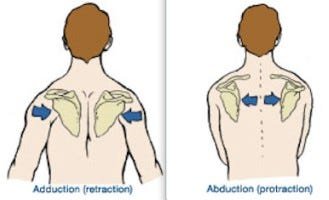Trail running isn't just a sport; it's a captivating journey through rugged terrain, demanding both physical resilience and mental fortitude. As trail running gains popularity among fitness enthusiasts and adventurers, the importance of strength training in preparing for these exhilarating runs cannot be overstated. Beyond just logging miles on the trail, incorporating strength training into your regimen can be the key to unlocking your full potential as a trail runner.
The Unique Demands of Trail Running
Unlike road running, trail running presents a myriad of challenges. Trails are often uneven, with varying inclines, declines, obstacles, and surfaces. The constant changes in terrain demand exceptional balance, stability, and muscular endurance. Moreover, trail runners must navigate steep ascents and descents, requiring significant lower body strength and power to conquer challenging climbs and maintain control during treacherous descents.
Why Strength Training Matters
Strength training serves as the foundation upon which trail runners build strength, power, and efficiency.
At Avos we are a huge fan of the Trap Bar Deadlift - especially for our tall runners
Here are several reasons why strength training is indispensable for trail runners:
Injury Prevention: Trail running places immense stress on the body, increasing the risk of overuse injuries and muscular imbalances. Strength training helps mitigate these risks by strengthening muscles, tendons, and ligaments, enhancing joint stability, and correcting imbalances. A well-rounded strength training program can address weak areas, reduce the likelihood of injury, and promote longevity in the sport.
Enhanced Performance: Strength training enhances the body's ability to generate power, endure fatigue, and maintain proper form over long distances. Stronger muscles provide the support and propulsion necessary to tackle steep climbs, power through technical terrain, and navigate challenging descents with confidence. By improving strength and efficiency, trail runners can sustain higher speeds, conquer formidable obstacles, and excel in varying distances and difficulties.
Improved Running Economy: Running economy, the measure of how efficiently a runner uses oxygen at a given pace, is crucial for endurance athletes. Strength training contributes to improved running economy by enhancing biomechanical efficiency, optimizing muscle recruitment patterns, and reducing excess energy expenditure. As a result, trail runners can cover greater distances with less effort, allowing for faster race times and improved overall performance.
Mental Resilience: Trail running is as much a mental challenge as it is a physical one. Strength training cultivates mental resilience by instilling discipline, focus, and determination. Moreover, it allows individuals to have the confidence in their strength and conditioning to not have to worry as much about being injured and super fatigued. Being strong in the weight room and pushing yourself helps teach runners to embrace discomfort, overcome obstacles, and persevere in the face of adversity—essential qualities for success in trail racing.
Designing a Strength Training Program:
When writing a strength training program for trail running, it's advisable to include a variety of exercises that target key muscle groups, address weaknesses, and complement running-specific training sessions. Incorporate a diverse mix of bodyweight movements, resistance training, and plyometrics to enhance core stability, lower body strength, balance, and flexibility. Prioritize exercises like squats, lunges, deadlifts, calf raises, planks, and single-leg movements to strengthen muscles used in running and improve stability on uneven terrain. Ensure that your program progressively challenges your muscles while allowing for sufficient recovery to optimize gains in strength, endurance, and performance on the trails.
Conclusion:
In the dynamic world of trail running, strength training serves as an important tool for unlocking peak performance, preventing injuries, and mastering the challenges of rugged terrain. By integrating strength training into your training regimen, you'll not only become a stronger, more resilient runner but also embark on a transformative journey of self-discovery and exploration. So, lace up your trail shoes, hit the gym, and prepare to unleash your full potential on those trails.
In trail running, the climb is always worth it once you reach the top. Here are some clients enjoying the reward!










